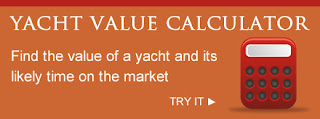 |
Frequently superyachts are priced on the basis that if you have to ask you may not be able to afford it. But have you ever wondered what price is put on the superyacht by the sales brokers.
Independent Superyacht consultant Andy Williams has created a calculator that takes the guesswork out of the equation.
His calculator gives the value of a yacht and its likely time on the market based on various attributes of the yacht and the time of year and location where it is listed.
The technique he has used to derive the formula was taken from a study of the real estate market by Kluger and Miller in 1990 and uses a data set of 61 yachts ranging in size from 21m to 55m.
One of the benefits of a statistical technique such as this is that it can be used to construct a price index.
There is sufficient sales volume in the superyacht industry to produce an index on at least a quarterly basis. The idea of a yachting index may seem arcane and largely irrelevant until one thinks of the importance of household name indices such as FTSE, Dow Jones, Hang Seng, used the world over by business leaders, economists, politicians, investors and savers to gauge the state of global commerce.
The advantage of a sales index is that it can contribute to filling the information gap in the market. The devastating effect of the information vacuum was all too clear to participants in the superyacht market in the wake of the 2008 credit crisis.
Traditionally, the superyacht brokerage industry operates under a veil of secrecy. In a buoyant market this is not a problem. However, in times of crisis, without some form of benchmark to monitor market fundamentals, buyers, sellers and brokers are left scrabbling in the dark.
Williams aims to engage with market participants in an effort to help them overcome this culture of secrecy with the goal of establishing a yacht price index. This would help provide stability to the market in good times and bad, to the benefit of all.
